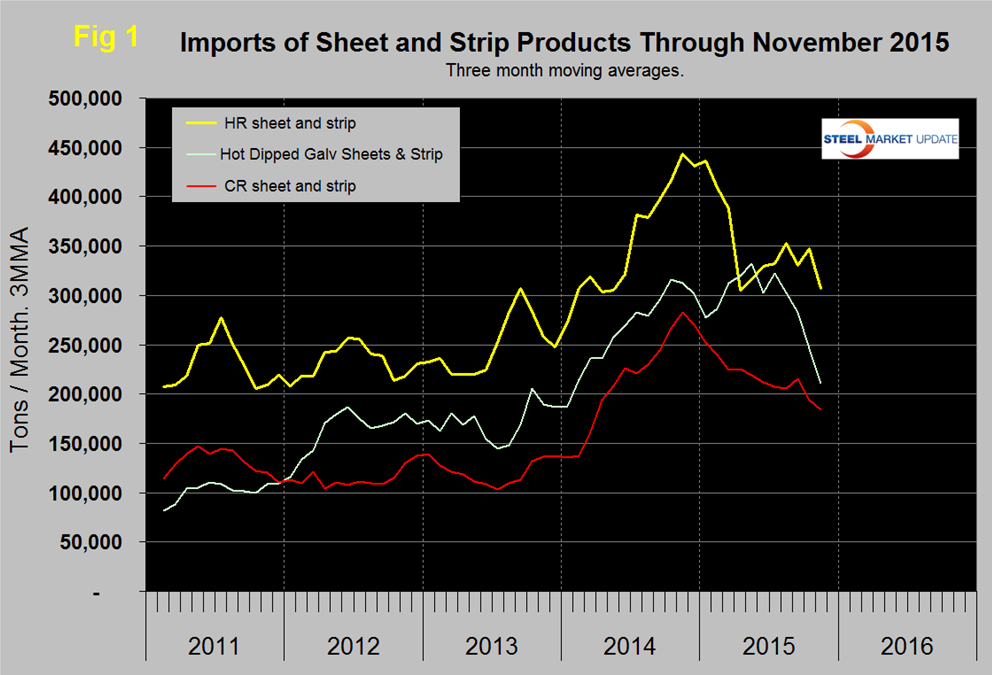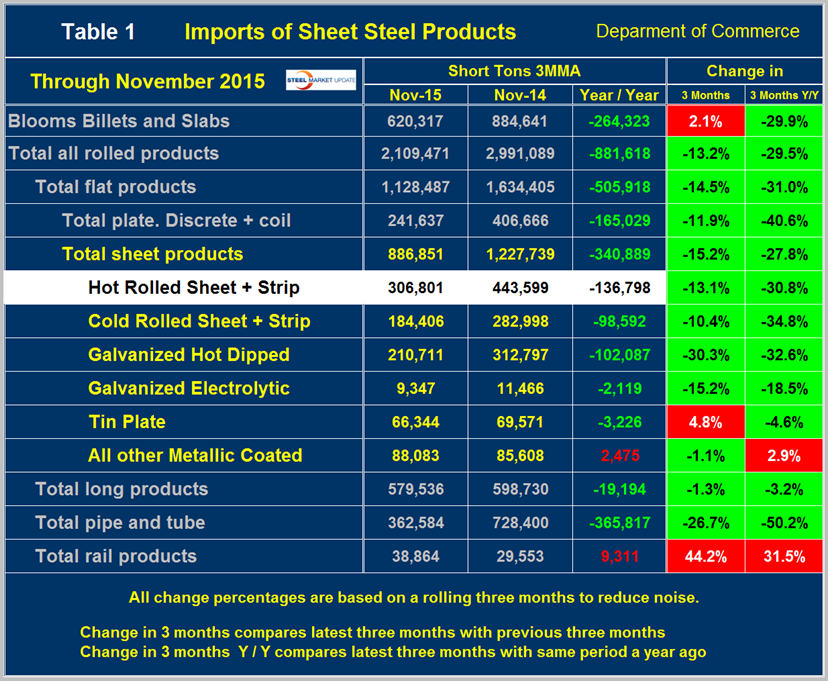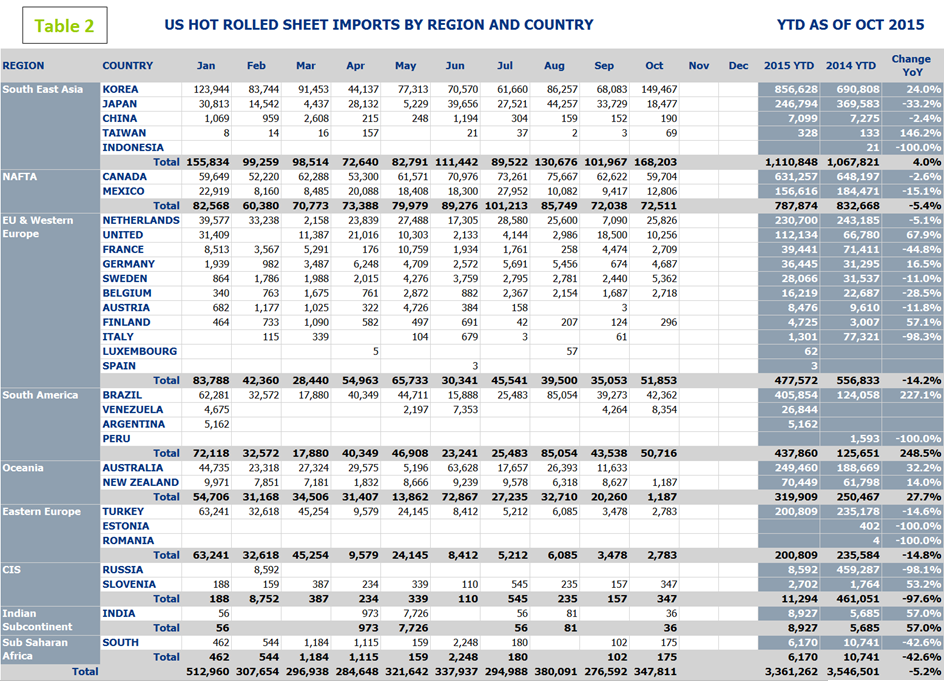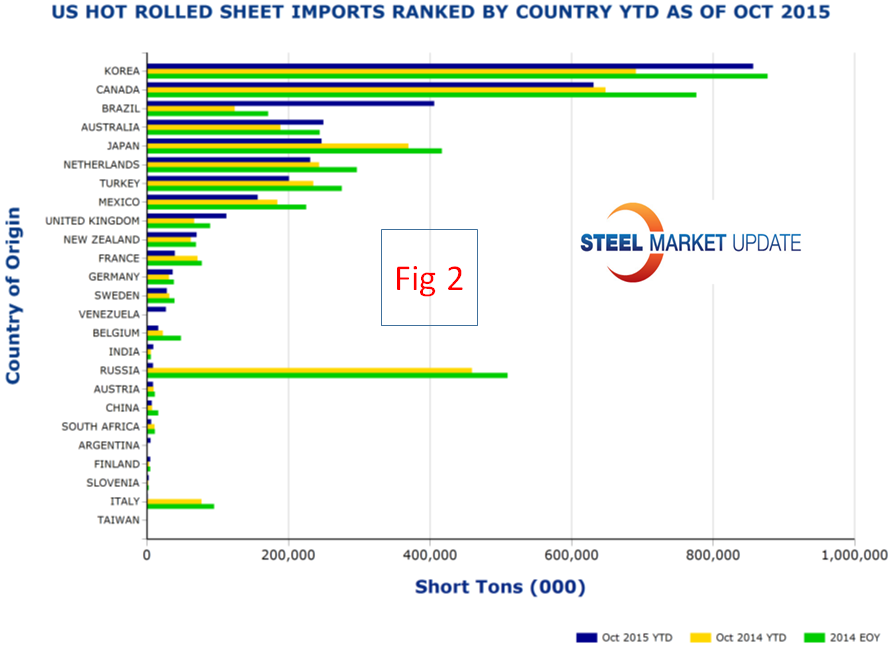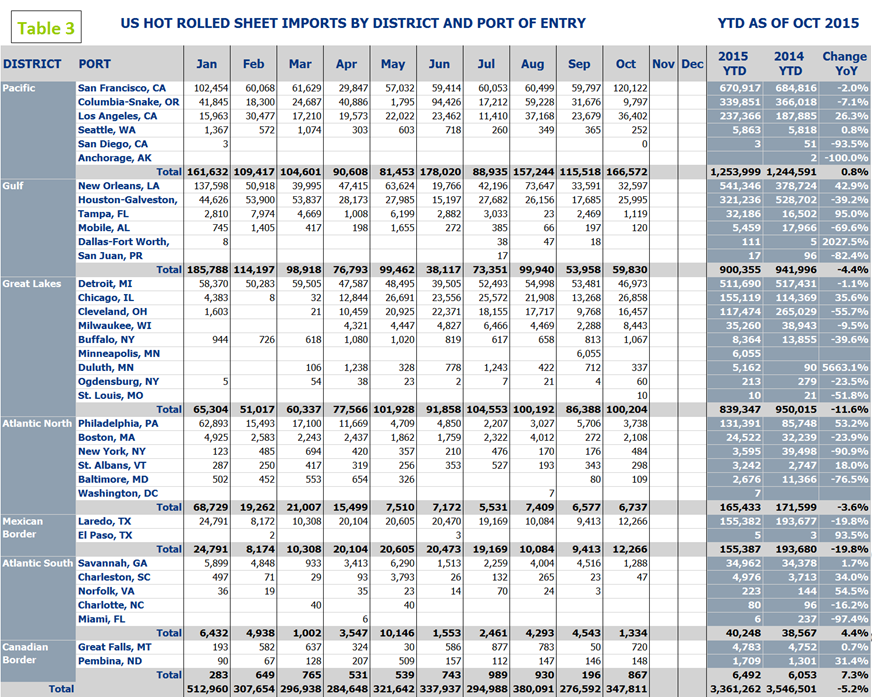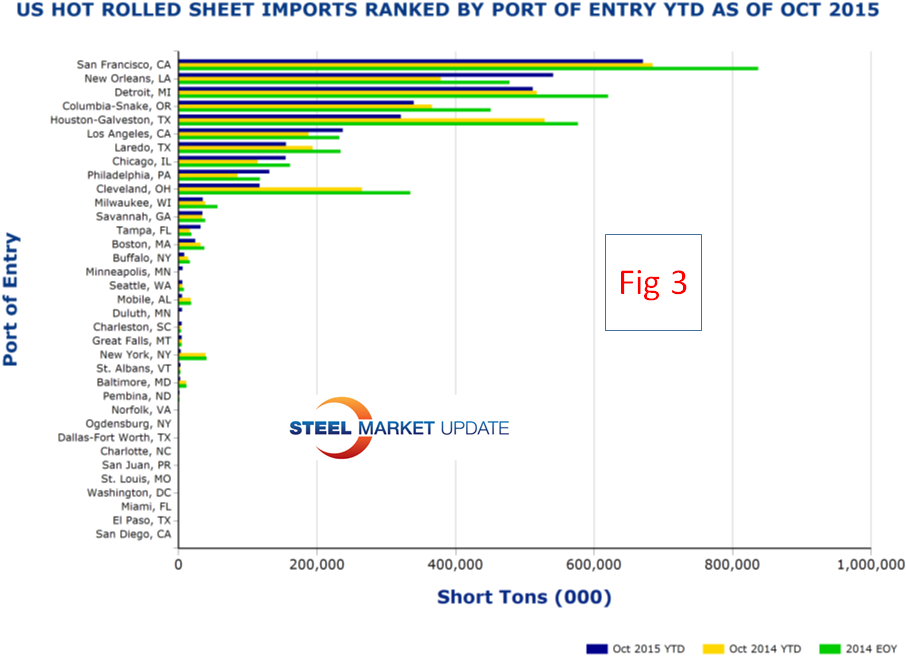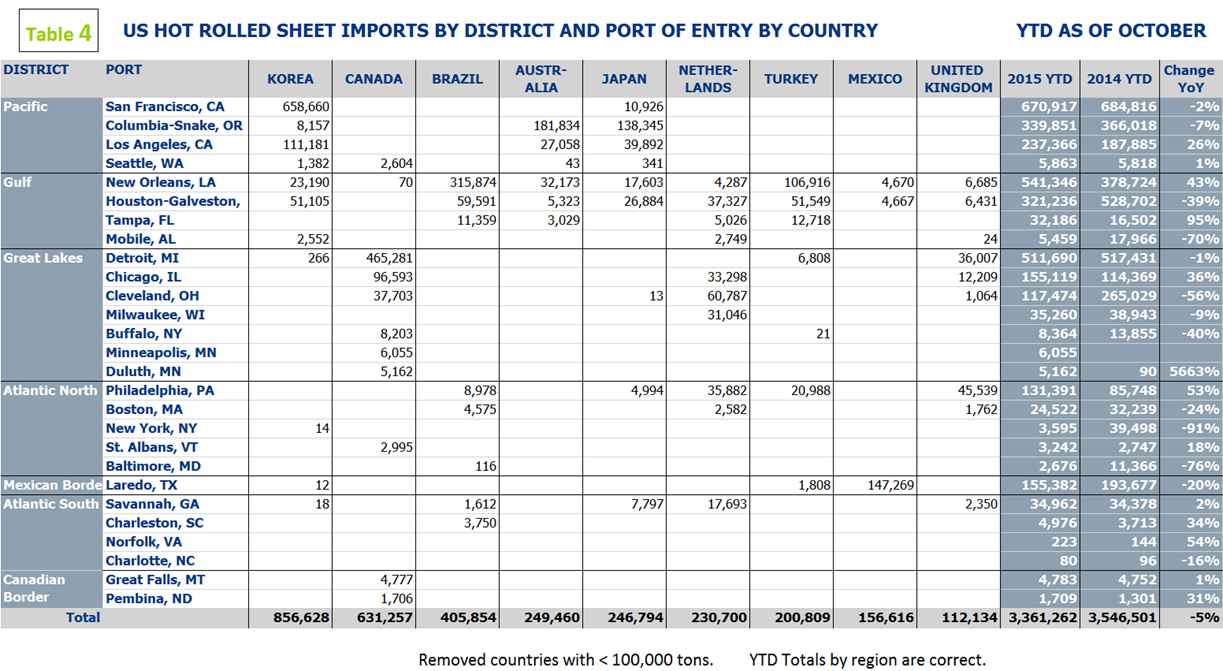Steel Products Prices North America
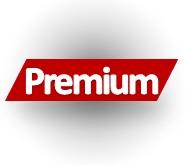
Detailed Import Report for Hot Rolled Sheet by Port and Country
Written by Peter Wright
December 15, 2015
The following article is one that is produced for our Premium level members once we release the latest Imports by Product, Port & Country data into our website. In this article we want to give you a little feel for the data. Once you start reviewing imports by port you can begin to ask questions like why did imports to Charleston, SC fall off dramatically during 2015 versus prior years or, why are imports into New Orleans so high (probably being shipped by barge up the Mississippi…)?
![]() This report is a detailed drill down into imports of hot band through October, beginning with the big picture and ending with exactly what came into a region of significance to your business and where it came from. SMU has developed a series of reports that cover hot rolled, cold rolled, HDG, other metallic coated (mainly Galvalume), coiled plate and semi-finished slabs. All volumes are in short tons. These reports can be found clicking on the analysis tab in the SMU website and then going to the Import/Export Data tab. At the bottom of that list will be our Imports by Port/Country (P). The “P” next to the heading means it is for Premium level customers. Reports for the other products listed above are in a computer generated format and a bit less comprehendible than what we present here but any subscriber wanting this fine level of detail can find it as described above.
This report is a detailed drill down into imports of hot band through October, beginning with the big picture and ending with exactly what came into a region of significance to your business and where it came from. SMU has developed a series of reports that cover hot rolled, cold rolled, HDG, other metallic coated (mainly Galvalume), coiled plate and semi-finished slabs. All volumes are in short tons. These reports can be found clicking on the analysis tab in the SMU website and then going to the Import/Export Data tab. At the bottom of that list will be our Imports by Port/Country (P). The “P” next to the heading means it is for Premium level customers. Reports for the other products listed above are in a computer generated format and a bit less comprehendible than what we present here but any subscriber wanting this fine level of detail can find it as described above.
Figure 1 shows the long term picture of total hot band imports since January 2011 and includes November licenses.
Also shown on this graph are the volumes of cold rolled and HDG for comparison. Table 1 shrinks the time comparison to one year and shows that YTD total imports are down by 137,000 tons compared to this time in 2014.
Comparing three months through November year over year, imports are down by 30.8 percent and comparing three months through November with three months through August imports are down by 13.1 percent.
All the following data in this report is final through October.
Table 2 drills down to tons by country and subtotaled by global source region by month for the first 10 months of 2015.
South East Asia had the highest regional total with Korea being by far the most prolific source within that region. Tonnage from SE Asia was up by 4.0 percent YTD and from NAFTA, the second largest source was down by 5.4 percent.
Figure 2 shows the YTD tonnage by country compared to the same period in 2014 and the final total for 2014 for comparison.
Korea and Brazil have had the largest proportional increase this year and the Brazilian tonnage is already well over double the 2014 total.
Table 3 shows the monthly tonnage by port of entry this year with sub-totals by US geographical region.
The Pacific region received the most tonnage YTD with San Francisco being the most popular port of entry. In October the tons into San Francisco were the highest of the year and for that region as a whole the tonnage YTD was up by 0.8 percent.
Figure 3 shows tons by port YTD 2015 and for the same period in 2014 and the final total for 2014 by country for comparison.
The tonnage through New Orleans this year is well above 2014 and in 10 months has exceeded the tonnage for all of 2014. Houston and Cleveland will be well down on 2014 by the time this year is closed out.
Table 4 puts it all together by showing the total tons that came into a port or region broken down into the source country for the first ten months of 2015.
Countries with <100,000 tons this year and ports with minimal tonnage have been removed from this table to make it more comprehendible but the totals are all correct.
Suggestions on how to read this chart are as follows: If Philadelphia happens to be your nearest port of entry you can see that 131,000 tons came into your area this year which was an increase of 53 percent over last year through October. The United Kingdom was the major source with almost 46,000 tons. If you happen to be interested in where a certain countries volume was entering the US we can use Brazil as an example. Not surprisingly the bulk of their material came in through the Gulf ports but some made it up the East Coast with tonnage into Philadelphia, Boston, Savannah and Charleston.
Half-truths (not to mention outright misleading statements) about import volume and source float around the industry on a continuous basis. Our intent is to shine a light on exactly what is going on in a subscriber’s neighborhood.

Peter Wright
Read more from Peter WrightLatest in Steel Products Prices North America

Nucor slows HRC price climb with $5/ton increase
After eight weeks of double-digit price increases on hot-rolled (HR) coil, Nucor slowed the price rise this week with an increase of $5 per short ton.

Domestic CRC prices surge ahead of imports
The price spread between stateside-produced CR and imports reached its widest margin in over a year.

Evraz raises plate prices $160/ton
Evraz North America (NA) has followed Nucor and SSAB with a plate price increase of its own: up $160 per short ton (st). The increase was effective immediately for all new orders of carbon, high-strength low-alloy, and normalized and quenched-and-tempered plate products, as well as for hot-rolled coil, the steelmaker said in a letter to […]

Nucor lifts HR coil to $820/ton
Nucor has increased its consumer spot price (CSP) for hot-rolled (HR) coil for a fourth consecutive week.

Nucor pushes HR spot price to $790/ton
Nucor increased its consumer spot price (CSP) for hot-rolled (HR) coil to $790 per short ton (st) on Monday, Feb. 10 – a $15/st bump vs. last week. The Charlotte, N.C.-based company has raised its weekly CSP by $40/st over the past three weeks after maintaining tags at $750/st since Nov. 12, according to SMU’s […]

